Elderberries (Sambucus nigra) have not only been a favorite to people for centuries as a remedy for colds and flu, but many animals love it too! I planted my elderberries from starts last year and I kid you not one of them is 12 feet tall! They are fast growers! I have lots of birds that like to feast on them and I am thankful for my little Yorky who likes to chase them away! If you don’t have a dog to chase away the birds from your berries try using a type of netting to cover the shrubs so the birds can’t get in but the sunlight and water can.
Growing Elderberry
Elderberry can grow up to 30 feet tall given the right conditions. It grows natively here up in our Utah mountains. As kids our parents would take us up to the family cabin near Park City and we would pick the berries to make syrup. Elderberry prefers rich moist soil and can grow anywhere from partial shade to full sun! Cuttings are used as propagation rather than starting from seeds. Although they can start from seed, it is much more difficult. Just make sure you have a good space to put the shrub so it can grow and be happy!
Medicinal Uses for Elderberry
Elderberries are not typically eaten raw, they don’t taste very good for starters and if eaten in large amounts they can cause nausea and upset stomach. They are best used when cooked. Be sure not to use the red berries because they are poisonous!
Both the flowers and berries are used medicinally. The flowers make a good tea for inducing sweating therefore helping to reduce fevers.
The berries are rich in immune-strengthening, anti-viral properties and are often combined with echinacea. However, you don’t need to have a cold to use elderberry syrup! It can be drizzled on pancakes and made into jams and pies! With my newly harvested honey and the berries coming on it’s been fun to make a little syrup for the family! Here’s my favorite recipe!
Elderberry Syrup
8 cups fresh elderberries (don’t use any green ones) or 4 cups dried berries
1 cup purified water if using fresh berries or 8 cups purified water if using dried berries.
1 cinnamon stick
4-6 cloves
4 1-inch pieces of fresh ginger
Honey (preferably raw and local)
Pick all berries off stems and fish out the green ones. Place in a medium size sauce pan and add water, cinnamon, cloves and ginger.
Bring to a low simmer for 30 minutes or until the liquid has decreased by half in volume, be careful not to boil it! (Your house is going to smell amazing at this point!) Next strain the mixture and measure the liquid.
Match the same amount of honey to liquid and stir in until melted. Keep the syrup refrigerated for up to 3 months! If using medicinally to fight off a cold/flu, take 1-2 tablespoons several times throughout the day.

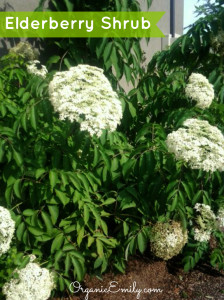
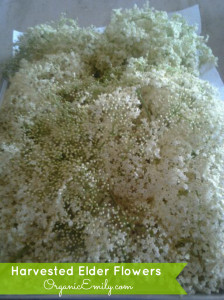
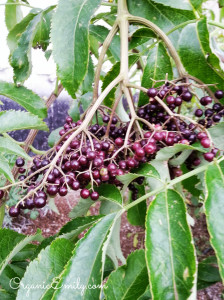
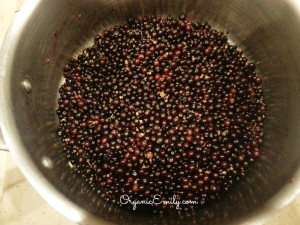
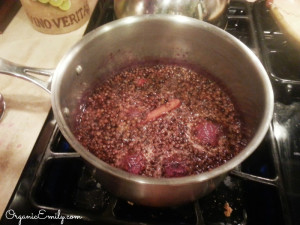
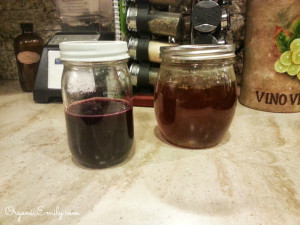
Confused about the Elderberries. You said the red ones are poisonous. Does that mean there are different color berries on the bush?? Some healthy and some not? What color are the elderberries. How do you know if you have an elderberry bush?
Great question! The specific species of elderberry plants that produce red berries are poisonous. Most of the elderberry plants sold and grown natively here in Utah are the ones that produce deep purple/blue fruit. A few good varieties are York, John’s and Adam’s. They all help pollinate each other well too! As far as knowing if you have an elderberry bush (and I’m assuming you may think you have one), you might want to take a branch of the shrub you think is an elderberry into your local nursery and ask them to help you identify it. If it isn’t, ask them to special order you a few plants so you can get started! Hope that helps! Thanks for visiting the site!